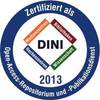Preview |
PDF, English
Download (6MB) | Terms of use |
Abstract
Microtubules are key components of the cytoskeleton, playing essential roles in cellular processes such as division and migration. In vivo, microtubule assembly begins with nucleation, a process typically mediated by γ-TuRCs. These complexes act as structural templates that guide the spatial and temporal polymerization of α/β-tubulin dimers, a function crucial for organizing microtubule networks at MTOCs, including the centrosome in human somatic cells.
Recent advances in cryo-EM have provided high-resolution structural insights into purified γ-TuRCs, revealing their asymmetric, ring-shaped architecture and the arrangement of core subunits. These studies have deepened our understanding of γ-TuRC structure, assembly, and potential activation mechanisms. However, key questions remain about their native organization within centrosomes—specifically, their spatial distribution, interactions with targeting and activation factors, and regulation during the cell cycle and mitosis.
In this study, cryo-ET was used to visualize human centrosomes and uncover the in situ structure and molecular organization of γ-TuRCs. Two distinct centrosomal pools of γ-TuRCs were identified: one located in the PCM and another within the centriole lumen. In the PCM, γ-TuRCs are often associated with the adaptor protein NEDD1 and the activator CDK5RAP2. NEDD1 forms a tetrameric structure at the γ-TuRC cone region through interactions with GCP3/MZT1 modules and GCP5/6 extensions. Its binding to the centrosomin (CM1) motif of CDK5RAP2 occurs in distinct patterns that correlate with conformational changes in γ-TuRCs. Within the centriole lumen, γ-TuRCs form a compact, highly organized cluster tethered to the centriole wall via the Augmin complex, which interacts with the inner centriolar protein POC5. These lumenal γ-TuRC–Augmin assemblies are shielded from degradation during interphase and are released at the onset of mitosis to promote spindle formation. This study reveals that centrosomal γ-TuRCs engage in distinct, modular interactions with various centrosomal proteins, influencing both their localization and potential activation. These findings provide critical insight into the spatial organization and functional regulation of γ-TuRCs in the cellular context.
| Document type: | Dissertation |
|---|---|
| Supervisor: | Schiebel, Prof. Dr. Elmar |
| Place of Publication: | Heidelberg |
| Date of thesis defense: | 17 October 2025 |
| Date Deposited: | 27 Oct 2025 14:10 |
| Date: | 2025 |
| Faculties / Institutes: | The Faculty of Bio Sciences > Dean's Office of the Faculty of Bio Sciences |
| DDC-classification: | 570 Life sciences |
| Controlled Keywords: | Centrosome, tomography |









